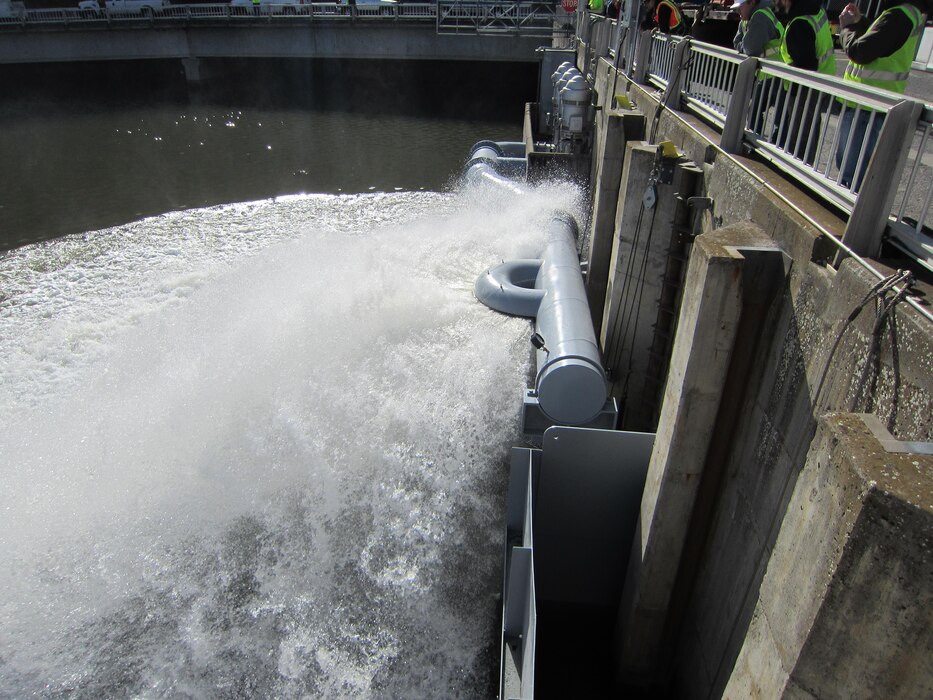I am responding to the letter to the editor from Scott Levy that the CBB published on April 7, 2022.
As a Fish and Wildlife Biologist for the Walla Walla District, Corps of Engineers from 1971 to 2000, I was there when disinformation and misinformation began to spread and hints of breaching the four lower Snake River dams started. I was there through the “nitrogen” problem of the 70s. I was there during the development of the juvenile salmon bypass systems and the juvenile fish transportation program. I was there during the Endangered Species Act report development and listing. I was there when the Bonneville Power Administration Fish and Wildlife Program began.
I was also there when the Corps conducted one of its largest ever feasibility studies in the late 1990s addressing alternatives, including breaching the lower Snake River dams to save the salmon. In fact, Jim Waddell was a senior executive at the Walla Walla Corps at the time. He once told me that he favored breaching the dams because it would make years and millions of dollars of work for the Corps. Fortunately, the Corps did not agree with him then, preferring to continue efforts to modify the dams and their operations to improve salmon survival.
Continuing a program that started in the 1950s of working with the region’s fishery and environmental agencies, survival of adult spring chinook and steelhead has improved to over 99 percent per dam, and survival of juvenile spring chinook and steelhead is over 95 percent per dam through improved bypass systems and turbine and spill operations. I was involved in the development of the juvenile fish transportation program that has continuously since the 1980s provided over 98 percent survival through the eight Corps dam and reservoir complexes though use of this system has been curtailed by the fishery agencies and tribes. And since I left, one new turbine with 98.25 percent survival has been installed at Ice Harbor Dam, and a second one is under contract now.
I was there when we concluded that even though spill was not the safest way to get juvenile salmon downstream past the dams, we could make a modification that would make spill a safer and more effective way of passing the dams. We devised the overflow weir concept in the late 1990s. Knowing that juvenile salmon leaving a natural lake are attracted to and pass out of the lake by the outlet stream, we advocated modifying one spillway bay at each dam to make a “natural,” overflow outlet. The remaining 7 to 21 spillway bays the eight Corps Snake and Columbia dams spill under gates at a depth of 40 to 50 feet. Juvenile fish are forced to dive down to an unnatural outlet, shot under the gate at 45 miles per hour with rapid decompression to the dam tailrace where there is extreme turbulence and elevated dissolve gas levels. Using only the overflow weir would be the safest way of protecting the salmon and it would provide more electrical energy for future global warming needs.
In the 1970s, spillway passage was severely discouraged. I was there when the states and EPA tried to set Total Dissolved Gas limits at 105 percent. We said it was an impossible limit because water was coming from Hells Canyon at 108 percent. The limit was subsequently set at 110 percent, but the fishery agencies and environmentalists have forced the Corps to spill up to 120 percent and now up to 125 percent with mass spill. That means juvenile salmon must pass under 31 undershot spill gates at the Snake River Dams and over 80 more undershot spill gates at the four Columbia Corps dams. When the TDG level is elevated below Lower Granite Dam, it is boosted back up at each of the next seven dams and continues at a high level all the way to the estuary. While many self-appointed experts say spill is the safest way to get juvenile salmon past the dams, I say mass spill unnecessarily subjects juvenile salmon to harmful conditions TDG conditions for over 400 miles of the migration corridor.
Not only, are they subjecting juvenile salmon, adult salmon migrating upstream must migrate upstream intoxicated and debilitated by high dissolve gas levels in their blood. Far less has been learned about the effects of high TDG levels on adult salmon or their ultimate survival and success at spawning but it is known that there is substantial mortality to the hatcheries, spawning ground, and fisheries allowed above the dams.
Mr. Levy says, “It seems obvious that the Northwest Power Act, the Endangered Species Act and Article 6 of the U.S. Constitution all provide sufficient language for the judicial branch to order dam breaching.” For over six years, I was the Chief of the Environmental Section of the Walla Walla Corps. I was there when an Idaho representative of the Northwest Power and Conservation Council asked the question and was clearly reminded that only the US. Congress has the authority to breach the dams that were authorized by the US Congress. I am sure Judge Simon and his predecessors in this long litigious battle know this truth.
Mr. Levy advocates: “… promoting an open and honest dialogue concerning the plight of Idaho’s wild Salmon and Steelhead….” I am sure that if Mr. Levy, Mr. Waddell, and others like them spent more time seeking the real facts and less time litigating, spent more on the real solutions like restoring access and quality to spawning areas, and supported better regulation of harvest to return more, healthy adult fish to perpetuate the runs, much of the money wasted for the last three decades could have been more effectively spent for salmon survival.
John McKern
Fish Passage Solutions, LLC

